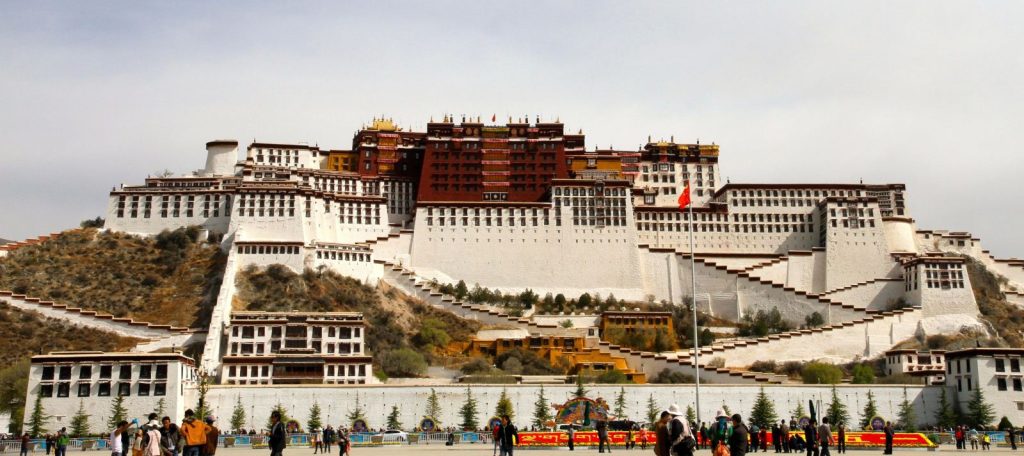On the third day of the “Shared Heritage of China, Shared Voice Across the World — Global Chinese-Language Media Alliance China Tour: Entering Tibet,” the Chinese-language media delegation visited two of Tibet’s most iconic cultural landmarks — the Potala Palace and Jokhang Temple — and attended the large-scale Tibetan cultural epic drama Princess Wencheng in the evening. From the winds of history etched in ancient architecture to the cultural tension of religious integration, and finally to a grand harmony presented on stage, the media delegates measured the depth of civilization with their footsteps and explored Tibet’s spiritual essence with their eyes and hearts.
Morning at the Potala Palace: A Symbol of Convergence between Politics and Faith
In the morning, the delegation ascended the iconic Potala Palace, the spiritual and historical symbol of Lhasa and all of Tibet. Perched atop Marpo Ri (Red Hill), the palace is a fortress-like architectural masterpiece blending Tibetan and Han styles, and a symbolic convergence of Tibetan politics and religion.
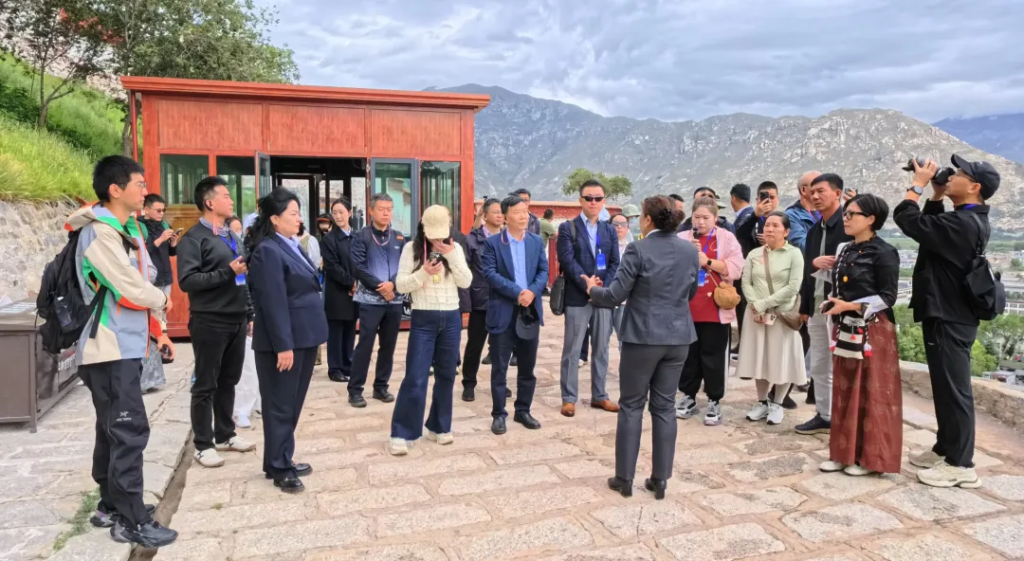
Originally built in the 7th century during the Tubo Dynasty under Songtsen Gampo, the Potala Palace was later expanded by the 5th Dalai Lama in the 17th century. It served as the winter residence of successive Dalai Lamas and the political-religious center of Tibet. Within its walls lie invaluable treasures — thangkas, murals, golden seals, jade books, scriptures, and historical documents — each narrating stories of regime transitions, enduring beliefs, and cultural exchange.
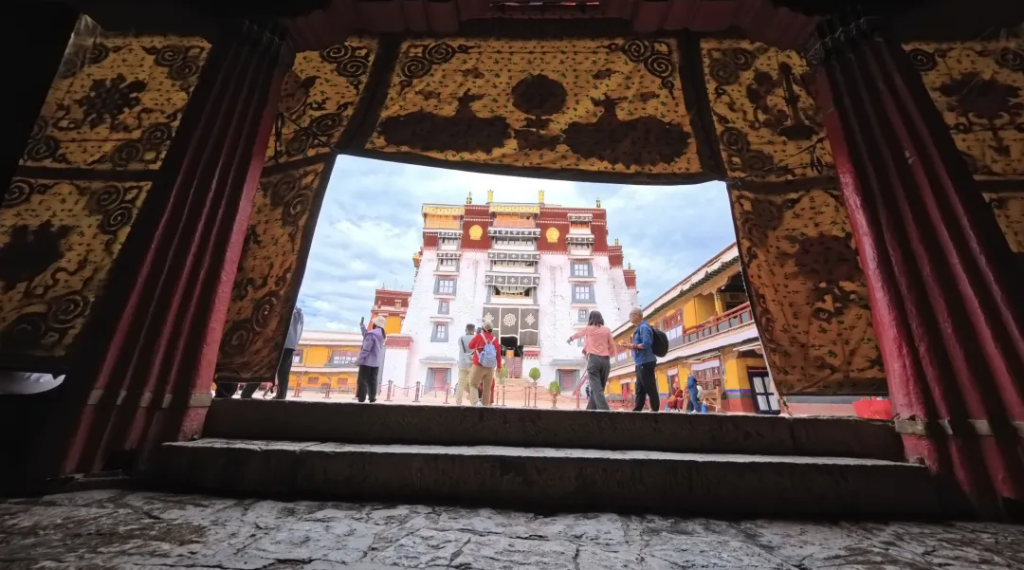
Guided by local experts, delegates moved between the White and Red Palaces, gazing at towering stupas, oil lamps, and relics, while absorbing the historical depth of dynasties past and the wisdom of Tibetan Buddhism. Many participants remarked that beyond architectural grandeur, the Potala Palace embodies a grand narrative — not just of regional history, but of national integration and cultural coexistence.
Afternoon at Jokhang Temple: Tracing the Spiritual Heart of Tibetan Buddhism
In the afternoon, the media group visited Jokhang Temple — one of the most revered sanctuaries of Tibetan Buddhism. Built in the 7th century by Songtsen Gampo to honor his marriages to Princess Wencheng of the Tang Dynasty and Princess Bhrikuti of Nepal, the temple enshrines a life-sized statue of the 12-year-old Shakyamuni Buddha, often regarded as the spiritual nucleus of Tibetan Buddhism.
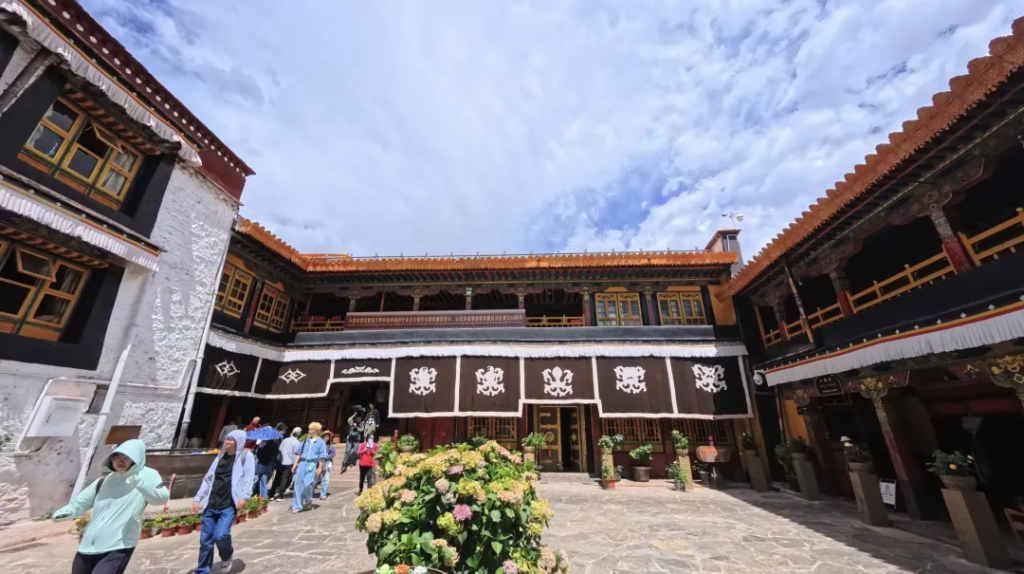
Before entering the temple, the streets of Barkhor surrounding it were filled with devout pilgrims prostrating or circumambulating the temple, their faith as enduring as the sun and moon. Inside, Tibetan and Han cultural elements are subtly interwoven through architecture, art, and ritual. The central statue of Shakyamuni — brought by Princess Wencheng from the Tang capital — is living testimony to the eastward spread of Buddhism and the spiritual linkage between the Central Plains and the Tibetan plateau.
During the visit, delegates not only witnessed the profound influence of faith on Tibetan society but also appreciated the state’s efforts to preserve religious heritage. Monks at Jokhang Temple highlighted the government’s continued investment in heritage restoration and digital preservation in recent years, breathing new life into this thousand-year-old sanctuary.
Evening with Princess Wencheng: An Immersive Journey through History and Harmony
In the evening, the delegation enjoyed the epic outdoor cultural performance Princess Wencheng, staged by the banks of the Lhasa River. This immersive drama recounts the 7th-century story of Princess Wencheng’s marriage to Songtsen Gampo, her dissemination of Central Plains culture, and her role in fostering harmony between ethnic groups.

The performance, set against natural landscapes and brought to life by over 400 actors, combined grand lighting, multilingual narration, music, dance, costume, and digital stage design to vividly portray the historical and human dimensions of Han-Tibetan interaction.
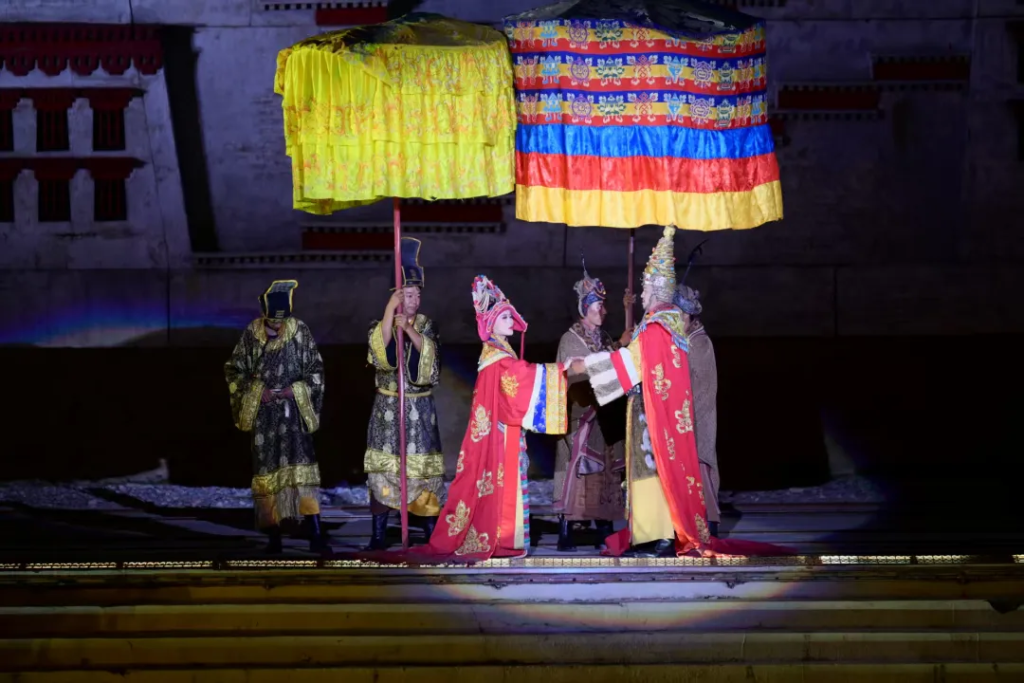
Princess Wencheng is far more than a display of ethnic customs; it is a powerful cultural narrative — a model of how China’s diverse yet unified civilization can be expressed visually to global audiences.
A Cultural Pilgrimage: From Heritage to Shared Identity
Through a full day of exploration and immersion, the media delegates experienced the deep cultural roots of Tibet and gained a clearer understanding of the real foundation behind the concept of the “Chinese national community.” The Potala Palace stands as a monument to historical weight and political evolution; Jokhang Temple embodies the power of spiritual belief; and Princess Wencheng reanimates a luminous moment of civilizational convergence in a contemporary form.
In this journey, the Chinese-language media delegates were not only observers, but also storytellers. At a time when misunderstandings about Tibet persist in some parts of the world, it becomes all the more important to present the region through firsthand experience and truthful narratives — to let the world hear and understand the real Tibet.

